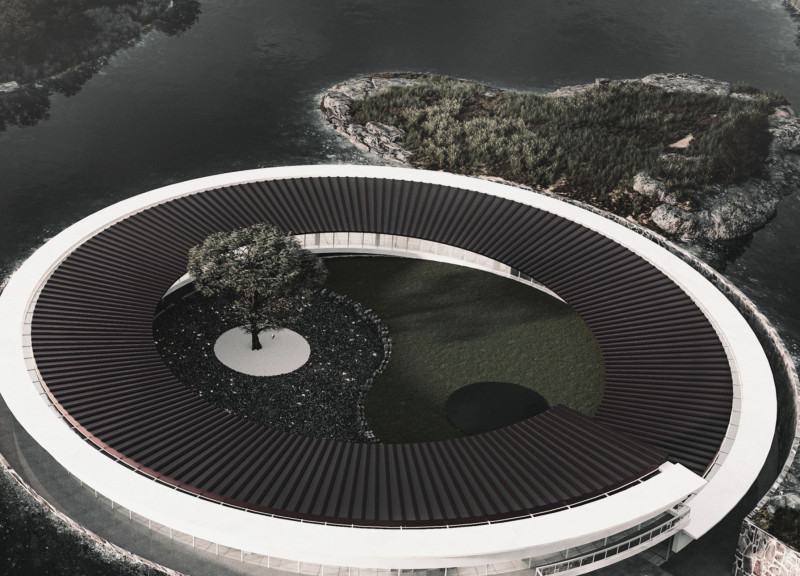5 key facts about this project
The setting at the intersection of Weixing Road and Caizhi Street in Changchun City, Jilin Province, China, offers a thoughtful approach to life and death through the application of Yin Yang philosophy. The facility serves a crucial role in providing palliative care, creating a supportive and peaceful environment for individuals during their final days. The overall design concept emphasizes the cyclical nature of existence, integrating natural elements that foster a sense of calm and reflection.
Design Concept
The building features a circular layout that encourages movement and interaction among spaces. This design choice reflects the belief that life and death are interconnected rather than opposing forces. Visitors are welcomed by a gently sloping ramp that leads into the heart of the structure, setting a tranquil tone right from the start. The entrance invites exploration without overwhelming the senses.
Natural Integration
Two interdependent ponds are essential components of the site, playing a significant role in establishing a serene atmosphere. These water features not only enhance the visual appeal but also provide a soothing soundscape, promoting peace for those within the space. The sound of water gently flowing from the landscaping wall in the entrance hall encourages visitors to pause, offering moments for contemplation and mindfulness as they move toward the main building.
Interior Arrangement
Inside, various rooms are arranged with careful consideration for the needs of individuals in palliative care. Spaces such as dining areas, meditation rooms, and therapy spaces are designed to promote social interaction and support individual well-being. The careful configuration of these areas enhances accessibility while emphasizing comfort and warmth. This arrangement reflects an understanding of the emotional and psychological aspects of care during challenging times.
Architectural Harmony
The design connects the built environment with nature, ensuring a sense of unity with the surrounding landscape. The planting walls at the entrance enhance the experience of entering the facility, creating a gentle transition from the outside world. The focus on natural light and open spaces within the building emphasizes a welcoming atmosphere. Such details help create a setting that is not only supportive but also dignified, allowing individuals to navigate their experiences with peace and grace.



















































